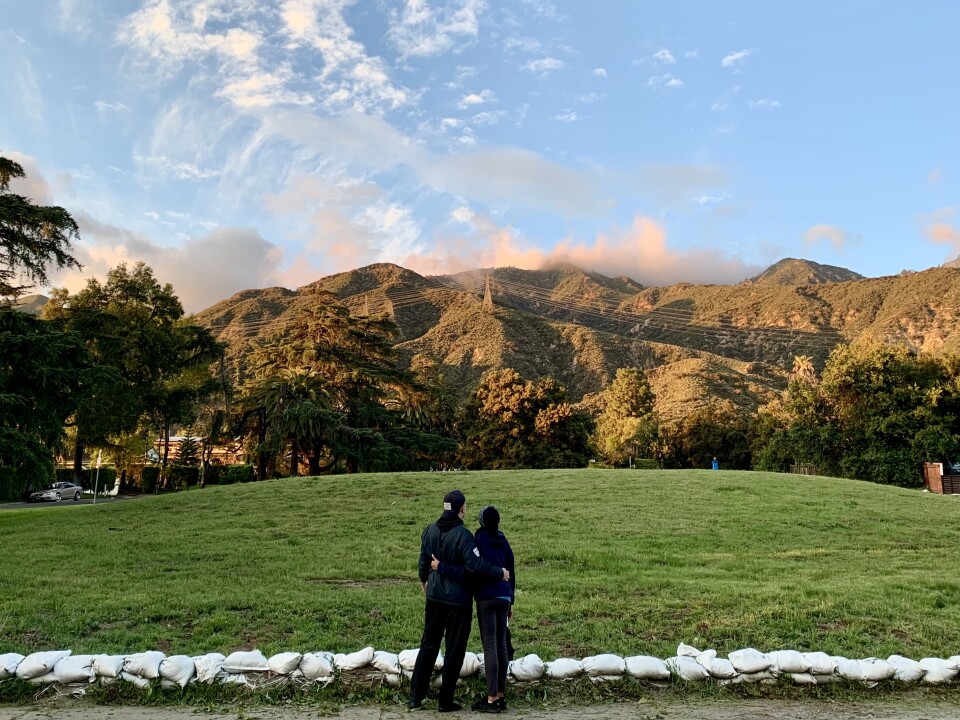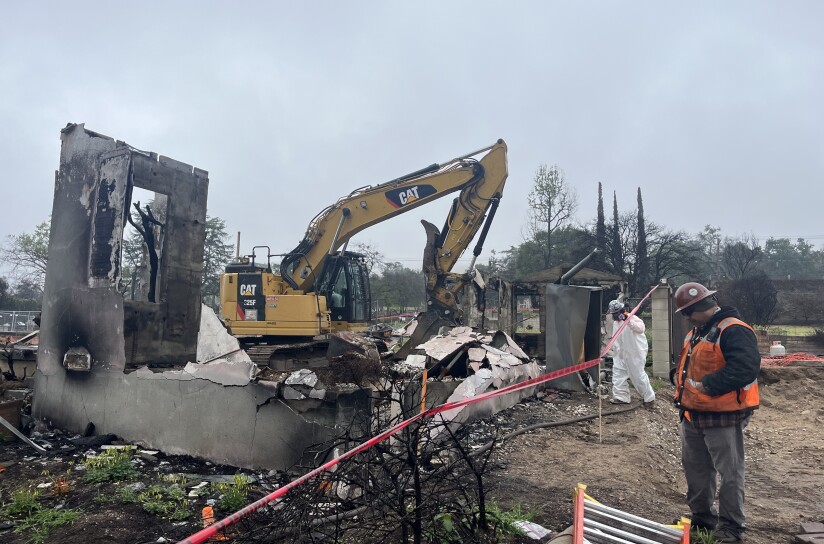Truth matters. Community matters. Your support makes both possible. LAist is one of the few places where news remains independent and free from political and corporate influence. Stand up for truth and for LAist. Make your year-end tax-deductible gift now.
On a cold drizzly morning in my Altadena neighborhood, I stood behind red tape, watching an excavator heave and groan through the burnt remains of our home.
Inside the cab was a long-haired, goateed man who swung the excavator’s arm forward, tearing down the few standing walls like sheets of paper.
There’s no real roadmap after your home burns down. But as far as milestones go, having your destroyed lot cleared is a quietly defining event shared by tens of thousands of people who lost homes in January’s wildfires.
Gone was any chance — however slim or non-existent — of stumbling across a missing ring, a yellowed family photo, a scrap of quilt. It’s OK, you tell yourself, you’re lucky. Your family is safe and sound.
For months, our family had been waiting for this day with a mix of dread and hope. Ours was one of the last lots on our block to be cleared. When we got the call saying our home was next on the list, we knew it was time to move forward. If only things didn’t feel so final.
Gone was any chance — however slim or non-existent — of stumbling across a missing ring, a yellowed family photo, a scrap of quilt. It’s OK, you tell yourself, you’re lucky. Your family is safe and sound.
- Read the series: Eaton Fire: A rebuilding journey
Debris removal, as it’s called in the disaster economy, is a big business. Supervisors from four different entities — the Army Corps of Engineers and its contractors ECC, Tetra Tech and Anvil — met me on our property, talking me through the process, and patiently answering my many questions about what they were taking (the foundations of the garage and house) and what they were leaving (a fence, the driveway).
The rain that made my skin clammy was actually a boon to the workers who had to constantly spray down the property and excavator with water to control the dust and ash kicked up by the digging.

One by one, trucks lumbered up our sloped, skinny driveway, their engines running as the excavator dropped piles of dirt and rubble into their plastic-lined beds. Often, another truck idled on the street, waiting its turn.
Sixteen or 17 trucks, I’m told, is what it took to lug away what was left of our home. They would join the daily procession of dump trucks traversing Altadena and Pasadena on their way to the freeway — a funeral march of sorts.
As the heaps of debris dwindled by the hour, I felt somewhat detached, fixated on the scene of an excavator trying to navigate our narrow lot on its steel tracks.
It was only a couple days later — when I returned after the clean-up was done — that the emotions hit.
In the months since the fire, the ragged outline of the few walls still standing helped me demarcate our old life. That wall was where the living room was. The kids’ bunk bed was pushed up against that other wall.
But now all I saw was a lot covered with undulating waves of reddish-brown dirt.
At least we still had this plot of land, and two trees — a Chinese elm out front and a grapefruit tree in the backyard.
But just days ago, we got a call from a contractor saying that our grapefruit tree had been tagged for removal. He offered to chop it down.

I hemmed and hawed, and asked for more time to mull it over. An arborist I hired months ago had warned me that things looked bad, but I held out hope.
On my day off, I went to look at the tree, scanning its blackened branches for any leaves or even a single green shoot. Nothing.
Bark had peeled off the trunk, revealing a creamy wood marbled with black that was cool to the touch. I patted the tree on its exposed wood, thankful for all the fruit it bore and the shade it gave.
That was probably my good-bye to the tree. I don’t think I can watch it get taken down. As my husband pointed out, the tree was there before we were.
Like our old house, I’ll remember where it stood and what it meant to us, until the edges of those memories start to blur.












